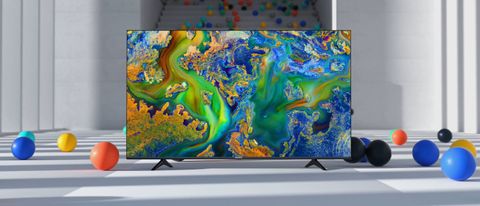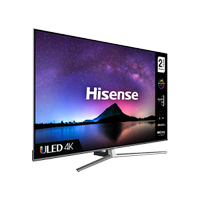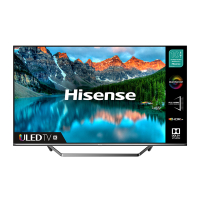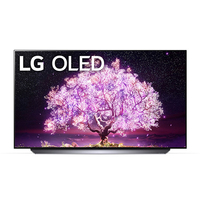TechRadar Verdict
The Hisense U6G ULED TV isn’t the TV for you if you're looking for bells and whistles. But if all you care about is a good viewing experience at a great price, you’ll get it here.
Pros
- +
Excellent image quality
- +
Android TV is solid
- +
Inexpensive
Cons
- -
Remote is a bit much
- -
Need to buy a soundbar
- -
An older option
Why you can trust TechRadar
One-minute review
The Hisense U6G ULED TV doesn't have all the fancy bells and whistles that you'd expect from more expensive TV options. But, despite being launched in mid-2021, it still offers superb image quality for a TV in its price range.
Its features include support for both Dolby Vision and HDR10+ alongside other HDR options. The U6G also offers up to 600 nits of brightness, which is fine for most environments, and while panels on this TV may not be the most consistent, under normal viewing you'd be hard pressed to notice blooming or blotchy image quality.
The Hisense U6G ULED TV comes with Google’s Android TV, which is only getting increasingly responsive as TVs get more powerful. It’s a decent option, and while you may still have to wait a second or two every now and then for it to catch up, such instances are few and far between.
At a starting price of $500 / £360 / AU$670 for the smallest 50-inch model, the U6G is tough to beat in this price range if you like Android TV or plan on using an external streaming device. Especially considering you might find the price reduced now it's been out nearly a whole year. This is why we ranked it as one of our top picks of the best 55-inch TVs.
Most competitors at a similar price point either don’t offer local dimming, don’t get as bright, or offer an inferior software experience. However, if you're not on a budget, you might want to look elsewhere. To see how it compares to the latest and greatest TVs, take a look at our pick of the best TVs right now.
Even though it's an older option, read on for our Hisense U6G review to find out why we still recommend this TV today.
Hisense U6G ULED TV review: price and availability
- Starts at $500 / £360 / AU$670 for the 50-inch model
- But you can find it heavily discounted now
The Hisense U6G ULED TV starts at just $500 / £360 / AU$670 for the 50-inch model, and ranges up to $1,100 / £790 / AU$1,470 for the 75-inch model. This makes it Hisense's budget TV option.
However, if you have the cash to splash on a Hisense TV that's better than this budget option and you're based in the UK, we'd recommend you take a look at our Hisense U7QF QLED TV review. Another 2021 TV from the brand, it offers a whole lot for its mid-range price of £599 for the 50-inch model.
Or, for another mid-range choice, take a look at the Hisense U8G Android TV review, which starts at $999 / £799 / $ 1,799.00 for the 55-inch version.
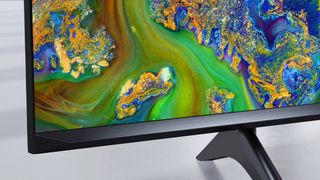
Hisense U6G ULED TV review: design
- Looks good, if a little basic
- Dated remote design
- Legs are made from plastic
The Hisense U6G ULED TV may sit at the budget end of the company’s TV lineup, but it still offers a solid design. No, it’s not as premium-looking as a much more expensive TV might be, but its bezels are still relatively slim, legs are sleek and stylish, and in general, the TV looks good. The bezels, legs, and everything else, are made from black or dark grey materials, and it generally looks good.
The legs themselves are made from plastic, unlike some other TVs in this price range. However, it’s not a cheap plastic and should still be able to hold the TV up perfectly fine. It doesn’t look cheap from a distance or at a glance, so guests won’t be able to tell that there’s plastic involved unless they get up close and personal.
Size: 50, 55, 65 and 75 inches
Display: LED
Connectivity: USB, HDMI
Brightness: 600 nits
Supported services: Netflix, Hulu, Disney+, Amazon Instant Video, YouTube
Features: Game Mode, Alexa Built-in, Google Assistant, Voice Remote, Dolby Vison and Dolby Atmos.
On the back of the TV, you’ll get all your ports and connections. The TV offers a total of four HDMI ports, three of which are side-facing and one of which is back facing. You’ll also get an optical output for audio, two USB ports for power, an Ethernet port, and AV in ports. It’s a solid selection of ports, and more than enough for streaming devices, gaming consoles, and so on.
The remote’s design is perfectly fine, but it’s a bit dated. In a world of stripped-back Apple TV and Google Chromecast remotes, the U6G’s remote is a little intimidating. You’ll get full channel controls, software controls, Google Assistant controls, quick-access buttons for six streaming services, volume controls, and so on.
Generally speaking, the Hisense U6G ULED TV and the remote offer a solid design. This is a budget TV and you won’t get an overly premium design – but the design that is here will still look good in most homes.
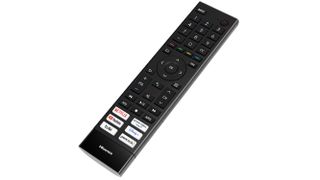
Hisense U6G ULED TV review: interface
- Android TV works well here
- Google Assistant built right in
The Hisense U6G ULED TV ships with Android TV, which integrates excellently with Google’s ecosystem of products, and at this point in time, works pretty well. There were years when Android TV worked slowly and poorly on any but the highest-end TVs, but that has thankfully changed over the past year or so. Admittedly, streaming devices like the Apple TV 4K is still far more responsive, but you’ll be able to make your way around Android TV relatively easily.
The remote offers controls for your smart TV, but the way it controls your TV out of the box isn’t all that smart. By default, it works through infrared, which means that it requires line-of-sight but to use some of the smart features, like Google Assistant, you’ll be prompted to pair the remote through Bluetooth. It’s a little weird that you have to pair the remote manually and it really should be paired out of the box.
For the uninitiated, Android TV basically offers a row of apps at the top of the UI, along with rows of content for each app under that. It’s a solidly designed interface, and if you’ve never used it before, you’ll get used to it.
App support, similarly, is quite good. Android TV supports most major apps including Netflix, Hulu, HBO, YouTube and others and there's even recommendations based on shows and films you've previously watched.
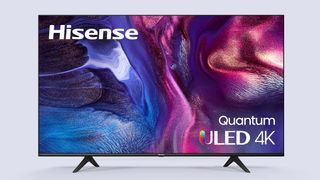
Hisense U6G ULED TV review: picture quality
- Support for Dolby Vision, HDR10+, and HLG
- Excellent image quality, but it doesn’t have the most consistent panel
Hisense’s ULED technology has been a hit – ULED TVs offer bright, vivid colors and deep black levels on a budget, and the Hisense U6G is no exception to that rule. The TV offers a 4K resolution, support for Dolby Vision, HDR10+, and HLG, and 60 local dimming zones to ensure deeper, more natural black levels.
The Hisense U6G ULED TV is at the low end of Hisense’s new TV lineup, but it still offer an excellent image quality for a TV in its price range.
The TV offers a range of image modes for different viewing preferences. Out of the box you’ll get seven HDR modes, including a game mode and a sport mode. Most of the time, I kept it on HDR Standard, which offered more than enough brightness for my usually-dark living room. If you feel comfortable doing so, we would recommend experimenting with the viewing modes to find the best for your situation.
So what are the trade-offs for buying the lowest-end TV in Hisense’s new range? Well, while 60 dimming zones is fine, it’s not amazing — and you’ll get more on Hisense’s more expensive offerings. This should make for less blooming — on the U6G there was some blooming around bright objects, especially near the edges of the display. You’ll get a more consistent experience. On the U6G there was some splotchiness, again especially near the edges.
But the truth is that without an eagle-eye, and in regular viewing you’re unlikely to really notice these issues, and given the price range, the TV still displayed beautifully bright, vivid, and contrast-y images.
Now, the TV doesn’t do much more than offer an excellent image quality. That’s to say, shell out a little more and you can get the U7G, which has the 120Hz panel, HDMI 2.1, and VRR tech that might appeal to gamers. If you’re looking for bells and whistles, the Hisense U6G isn’t the TV for you – but if all you care about is a good viewing experience, you’ll get it here.
Watching HDR-supportive content like Apple TV+’s Tiny World was an immersive, beautiful experience. Watching lower-resolution content is a decent experience too. The TV’s upscaling tech is pretty good, and while not amazing, you’ll definitely forget that you’re not watching 4K content as long as the original source is 1,080p or so.
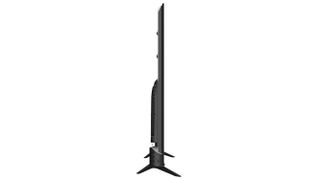
Hisense U6G ULED TV review: audio performance
- The built-in speakers aren’t terrible
- But most people will need a soundbar or pair of speakers to go with it
The Hisense U6G ULED TV is a visual powerhouse in the price range – but what about audio? Well, it does the job, but as is usually the case with budget TVs, if you afford to buy a pair of speakers or a soundbar you should do so.
Now, that’s not to say that the audio quality here is terrible. It’s now, and in fact, without having a previous-gen Hisense TV to compare the U6G to, it does seem like Hisense’s budget TVs are getting better.
The speakers in this TV can get super loud – so much so that I rarely went above the 15 level except for testing purposes. At higher volumes, you will run into some distortion, but under normal listening it’s not bad. You won’t get a lot of bass, nor will you get much detail in the high-end, but as mentioned, the speakers here will do the job in a pinch.
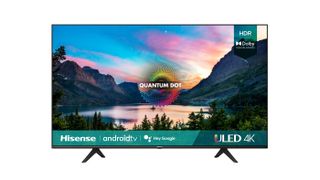
Conclusion
If you just want a solid image quality without too many extra bells and whistles, this TV is the way to go.
We'd especially recommend it if you're a Google fan. Because it has Android TV, it'll integrate with the rest of your Google devices, and that it has Google Assistant built into it, too.
It might be nearly a whole year old now, but it looks great, and supports most important HDR standards. Because it's a little older, you might also find that it's available for a reduced price around popular sales periods.
However, if you're not looking for a budget option, there are better TVs. Especially if you want a top quality picture and a TV with more modern features and looks.
Also consider...
If our Hisense U6G ULED TV review has you considering other options, here are three more budget TVs to consider.
Hisense U8G Android TV
The Hisense U6G is a solid choice for gaming, with low input lag and smooth motion handling. However, it doesn't support HDMI 2.1, so if you have an Xbox Series X or PS5, you might be better opting for the Hisense U8G Android TV. It has four HDMI ports, two of which support 4K at 120Hz while the other two support 4K at 60Hz.
Read more in our <a href="https://www.techradar.com/uk/reviews/hisense-u8g-android-tv-65u8g" data-link-merchant="techradar.com"">Hisense U8G Android TV (65U8G) review
Hisense U7QF QLED TV
If you've got a little more to spend but still want a low to mid-range Hisense option, then check out the Hisense U7QF QLED TV. It's a razor-sharp 4K TV that offers a whole lot for its mid-range price, with a picture that looks just as good upscaling HD sources as it does with native 4K.
Read more in our <a href="https://www.techradar.com/uk/reviews/hisense-u7qf-qled-tv" data-link-merchant="techradar.com"">Hisense U7QF QLED TV review
LG C1 OLED
The Hisense U6G and LG C1 OLED have different panel technologies, but the LG is a better TV in almost every way. It's also significantly more expensive than the budget Hisense model with prices starting at $1,499 / £1,699 (around AU$2,999), but the LG C1 OLED is a truly excellent TV – even though there is now a newer model available.
Read more in our <a href="https://www.techradar.com/uk/reviews/lg-c1-oled-tv-oled65c1" data-link-merchant="techradar.com"">LG C1 OLED TV review
- First reviewed July 2021.
Christian is a writer who's covered technology for many years, for sites including Tom's Guide, Android Central, iMore, CNN, Business Insider and BGR, as well as TechRadar.
